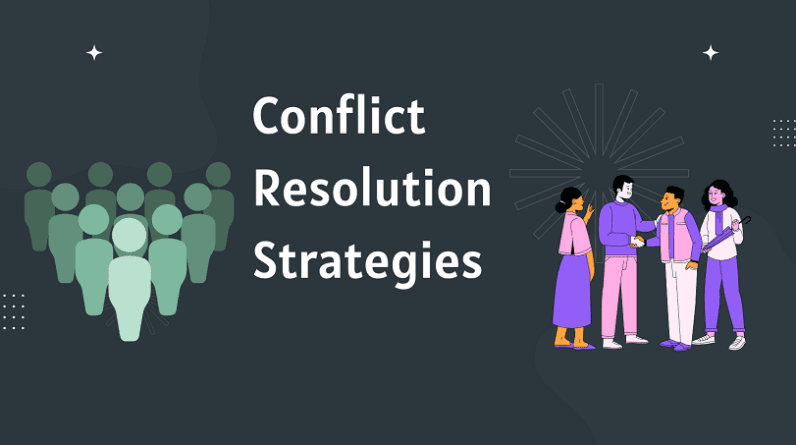
Conflict inevitably arises in any workplace. When you gather a group of people with diverse personalities, perspectives, values, and priorities, disagreements and disputes are bound to crop up. Learning constructive conflict resolution strategies is an essential skill for any leader or manager. Handled poorly, conflict can fracture teams and destroy company culture. But when resolved thoughtfully, conflict provides an opportunity for growth, ultimately strengthening your team.
What is Conflict Management?
Conflict management refers to the practice of resolving disputes between individuals or groups in a positive and constructive way. The goal is to minimize the negative outcomes of conflict while maximizing the positive results. Effective conflict management results in enhanced understanding, better solutions, increased group cohesion, and improved workplace productivity.
For example, a dispute arises between two engineers over the best design for a new product. Rather than arguing back and forth, a manager sits down with them individually to hear their perspectives. The manager then brings them together to find common ground and brainstorm alternative options to satisfy both their concerns. This constructive process yields a design that synthesizes the benefits of both original ideas.
Managers and team leaders often serve as mediators and facilitators when conflict arises. They identify solutions and assist team members in reaching resolutions.
Top 10 Conflict Management Strategies:
However, each individual can play a productive role in resolving conflicts by applying these top 10 conflict resolution strategies:
Address Conflicts Early and Promptly
Don’t allow conflicts to fester or be ignored. Address issues early and directly as soon as they emerge before tension escalates. Have open and honest dialogue aimed at understanding all perspectives of the situation. Intervening quickly can nip disagreements in the bud before relationships sour.
Seek Clarity by Separating Perceptions from Facts
Ask questions to understand different views of the situation and get to the heart of factual disagreements. Oftentimes conflicts arise from misunderstandings or differing perceptions of events rather than actual substantive differences. Fight assumptions and seek total clarity by digging deeper.
Separate People from Problems
Don’t make conflicts personal. Focus objectively on the issue or situation creating disagreement, not attacking the person. Blame, accusations, and name-calling will only ratchet up emotions and derail resolution attempts. Avoid assumptions about motives or character.
Listen Actively and Empathize
Let each party fully explain their perspective and validate their feelings. Paraphrase what you hear to show you comprehend what is being said. Ask open-ended questions to learn more and convey your desire to understand the other side. Engaged body language such as eye contact and mirroring posture facilitate communication.
Identify Common Interests and Goals
Highlight superordinate goals, outcomes, or interests that all sides share. Explore common ground and use that as a platform for generating solutions that satisfy everyone’s core needs. Often groups have more shared aims than differing ones.
Brainstorm Multiple Creative Options
Think outside the box to generate fresh alternatives and new possibilities. Apply lateral thinking and avoid getting fixated on one expected solution. Be open to out-of-left-field ideas that may end up better serving all parties.
Evaluate Options Using Objective Criteria
Once multiple potential solutions emerge, discuss pros and cons dispassionately using agreed-upon criteria. Don’t just insist on your personal preferred solution. Take a step back and evaluate options critically and unemotionally.
Use Compromise Strategically When Required
To reach consensus, both sides may need to compromise. Consider trade-offs that achieve partial goals and require some concessions from each party. Compromise wisely but don’t automatically default to it. Ensure mutual benefit.
Start Small and Build Trust
Implement tentative agreements slowly in stages. Begin by addressing smaller, less controversial conflicts first as you build trust and momentum. Celebrate small wins and moments of progress to motivate continued collaboration.
Follow Up and Modify as Needed
Check in regularly to ensure the conflict remains resolved. Be ready to renegotiate if needed. Manage adaptively over time, adjusting your approach continuously based on experience. Resolution often requires an iterative, flexible process.
Applying Conflict Resolution Strategies in the Workplace
Resolving conflicts effectively is crucial for a positive company culture and collaborative teams. When disputes arise, remain calm and address issues promptly before emotions escalate.
Remain calm and level-headed when disputes arise. Don’t get pulled into the emotional fray.
Intervene early and objectively before situations spiral out of control. Don’t let tensions reach a boiling point.
Facilitate focused, professional discussions centered on issues, not personalities. Keep things impartial.
Be a mediator, not a dictator. Let the parties decide – don’t force your preferred outcome.
Promote creative problem-solving where fresh options are explored openly. Think outside the box.
Help parties compromise if needed to find mutually beneficial solutions. Ensure a win-win resolution.
Let disputants generate ideas and agree on resolutions themselves. Imposed solutions often fail.
One study found constructive conflict resolution boosted team performance 29% versus unresolved conflicts. The benefits are proven.
Implement resolutions in gradual, small steps. Make incremental progress.
Verify everyone is satisfied. Reassess and tweak if conflict recurs. Adapt as needed.
With emotional finesse, patience, and practice utilizing these techniques, workplace conflicts can catalyze innovation, deeper understanding, and mutual respect—lifting company culture to a more positive and productive level.
Make conflict resolution training a priority in your workplace to strengthen your teams.







